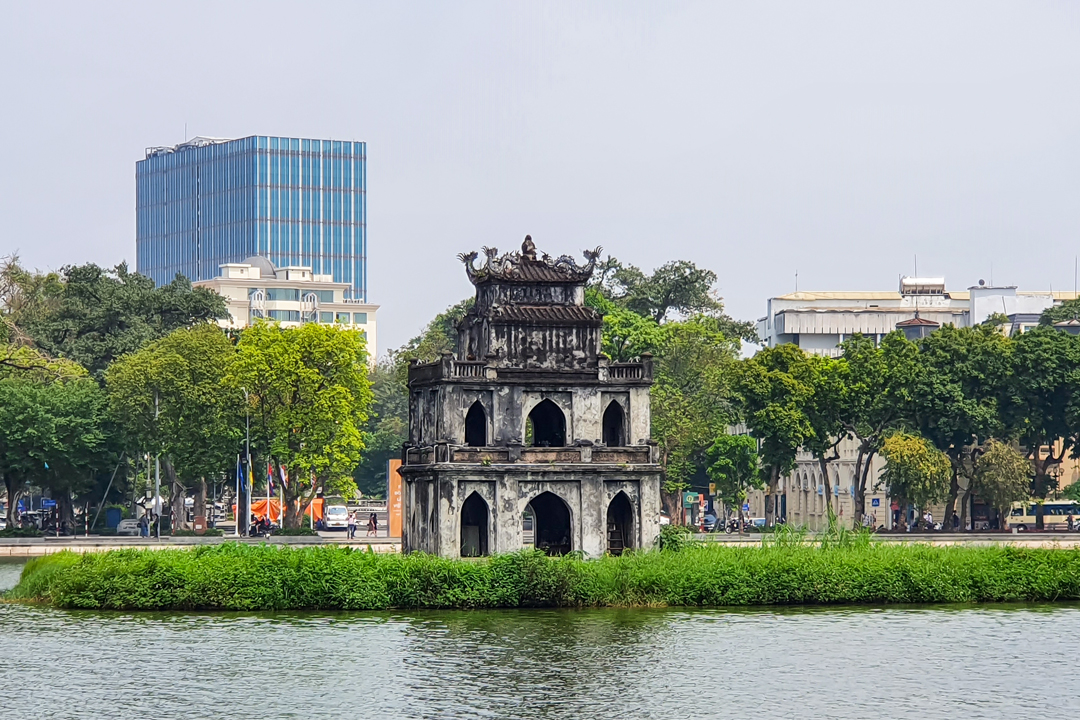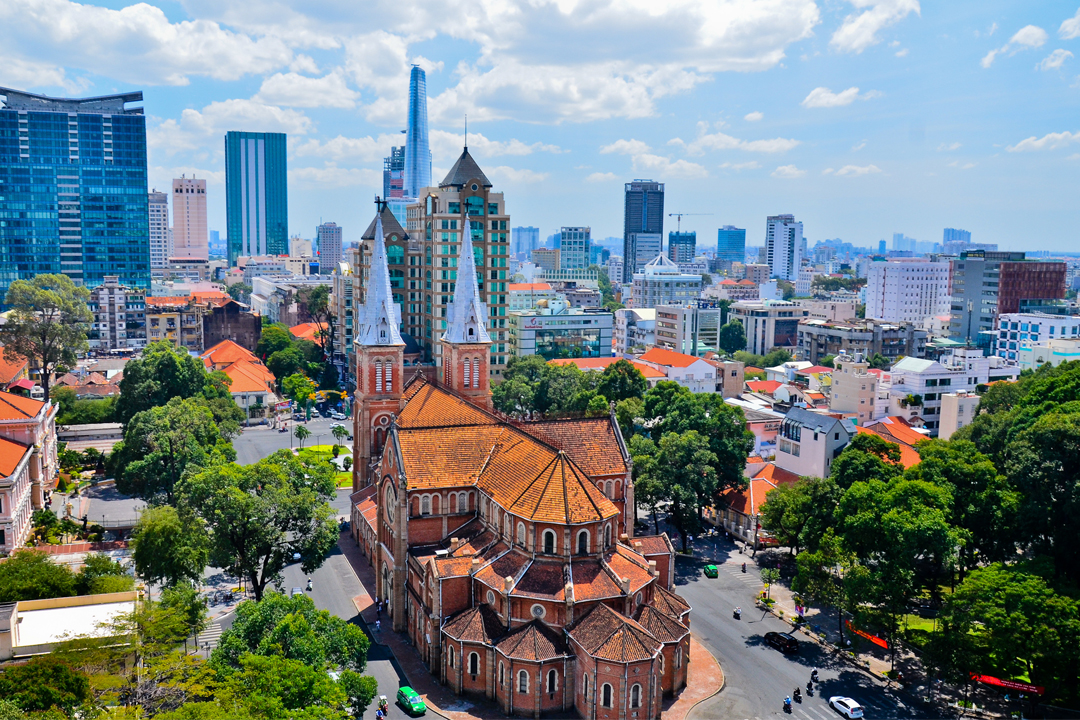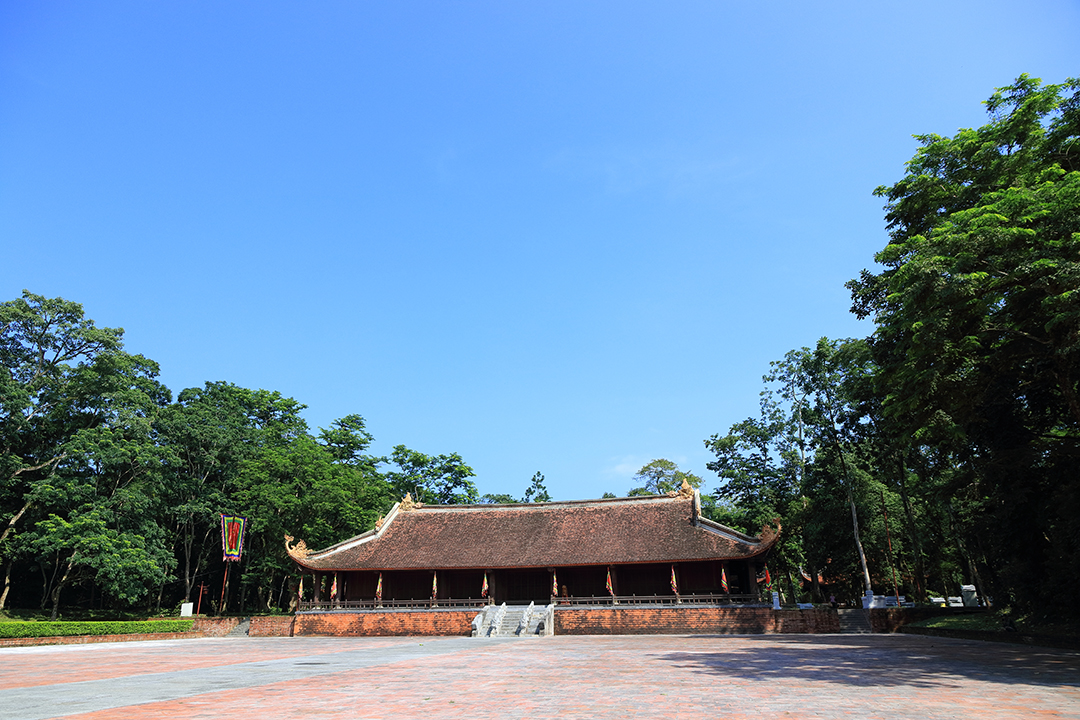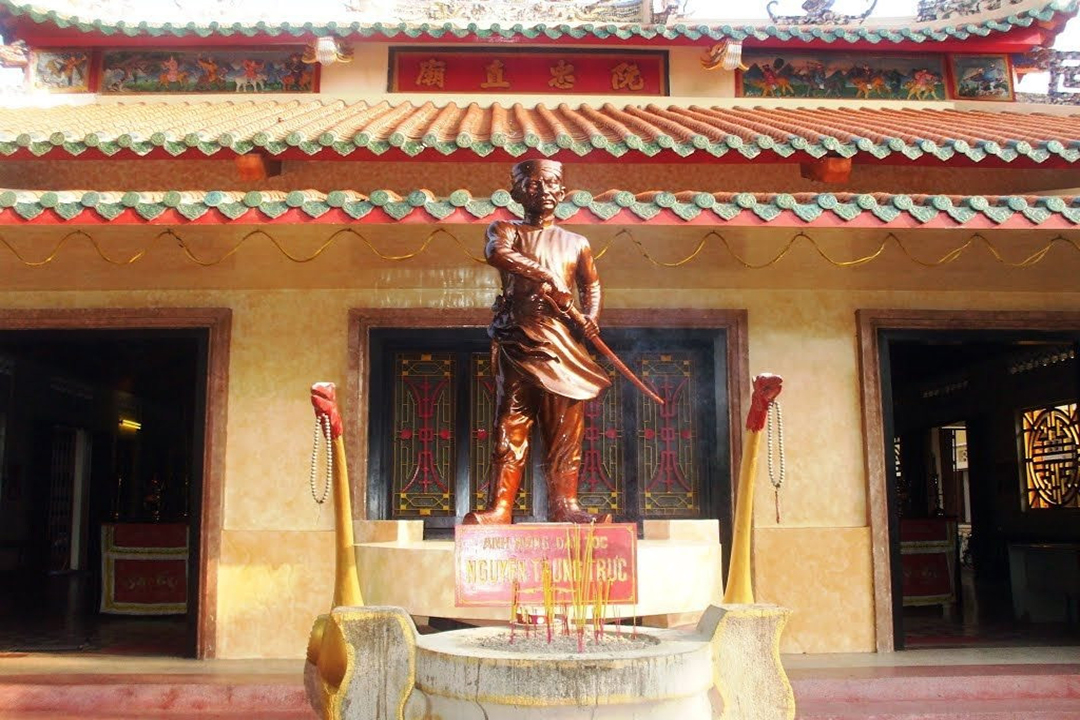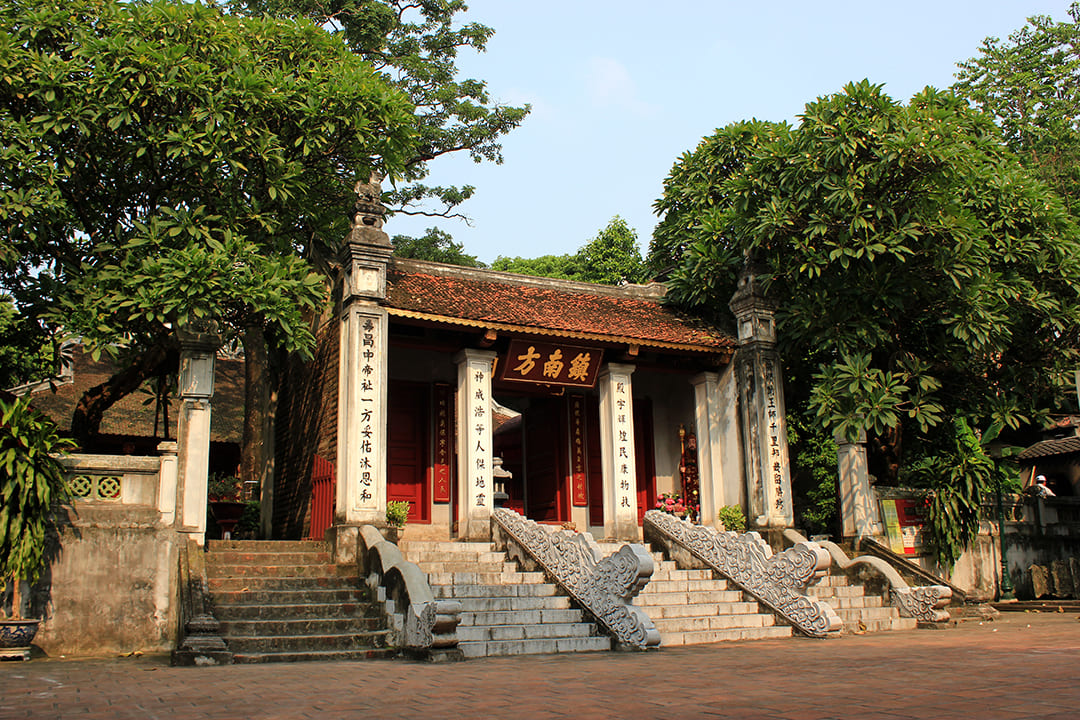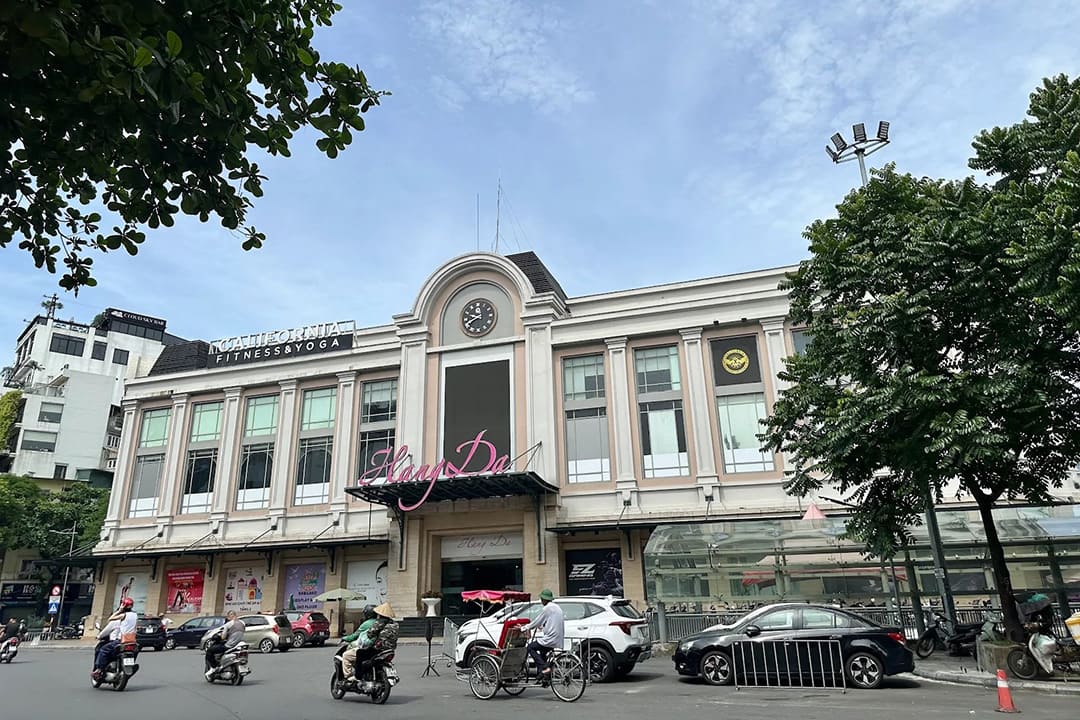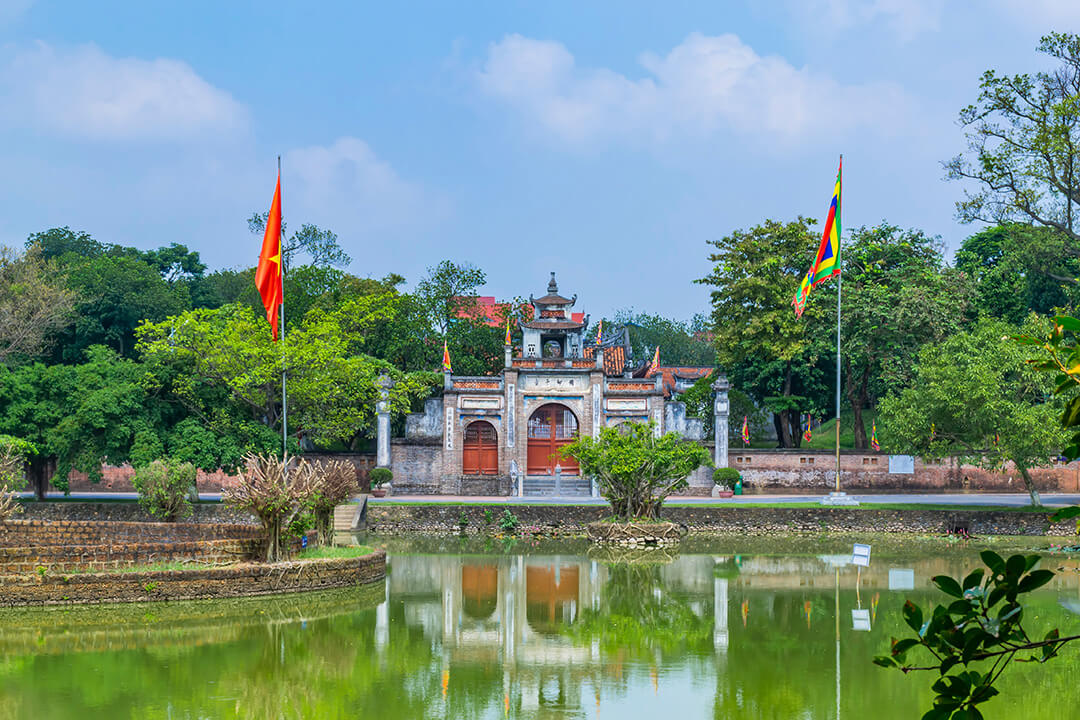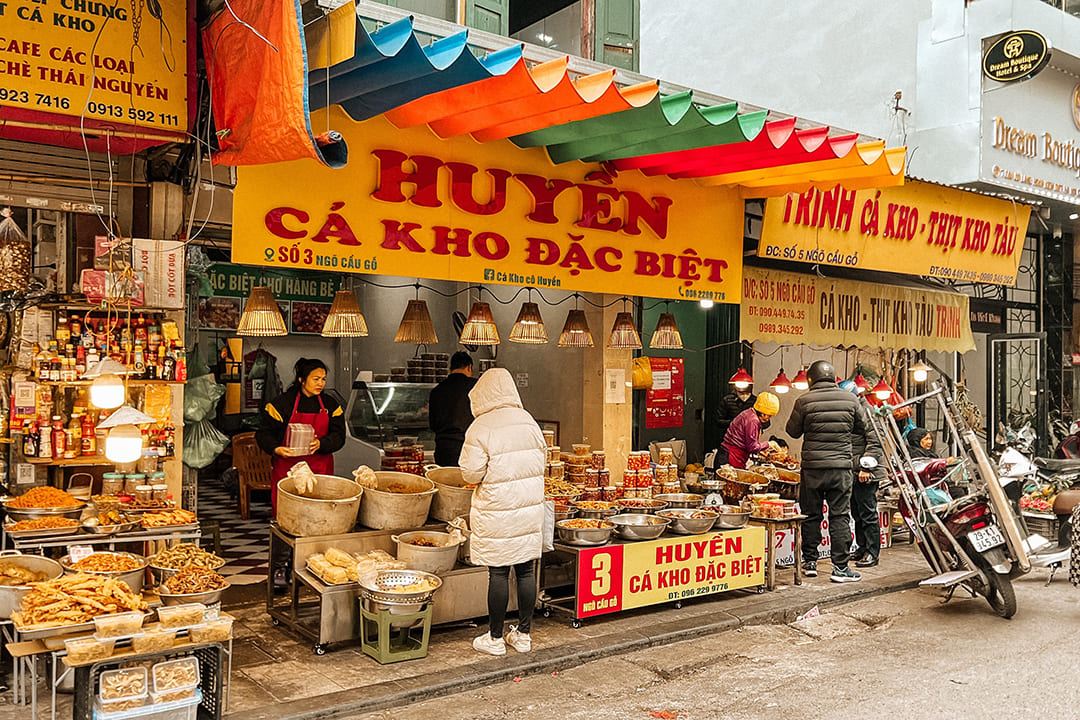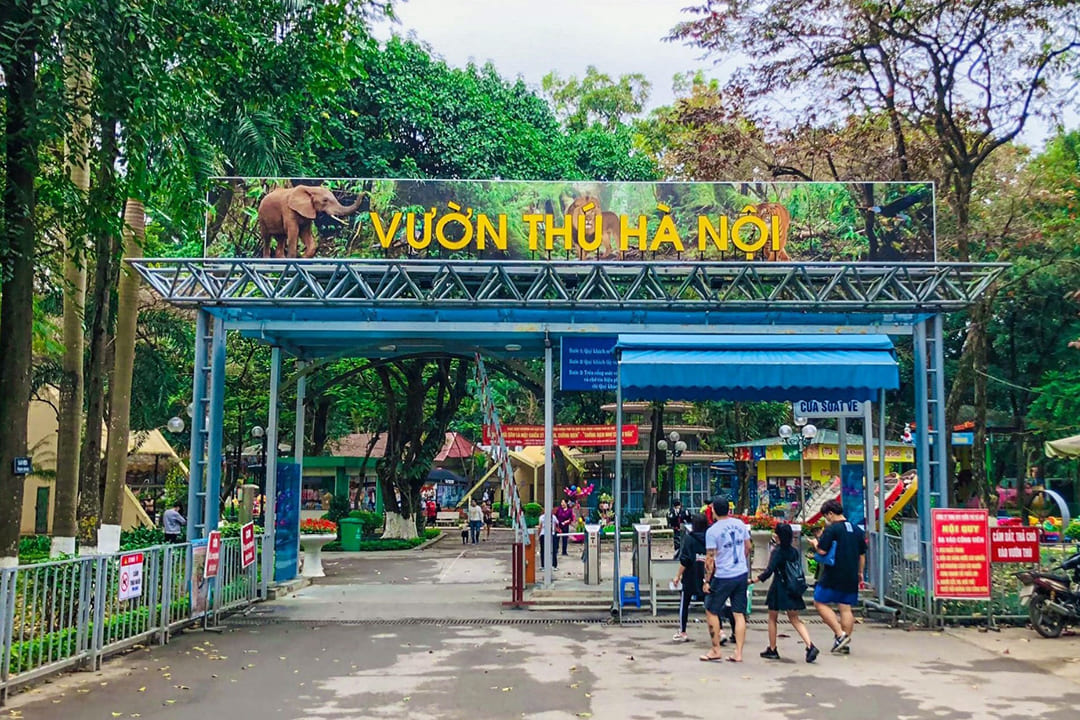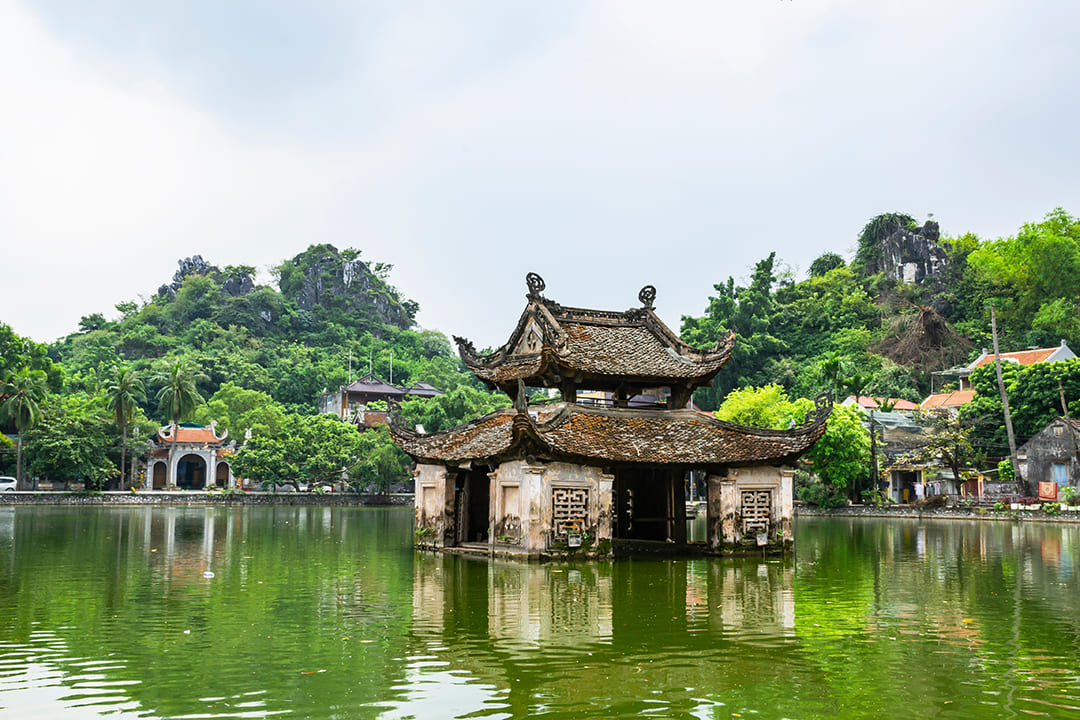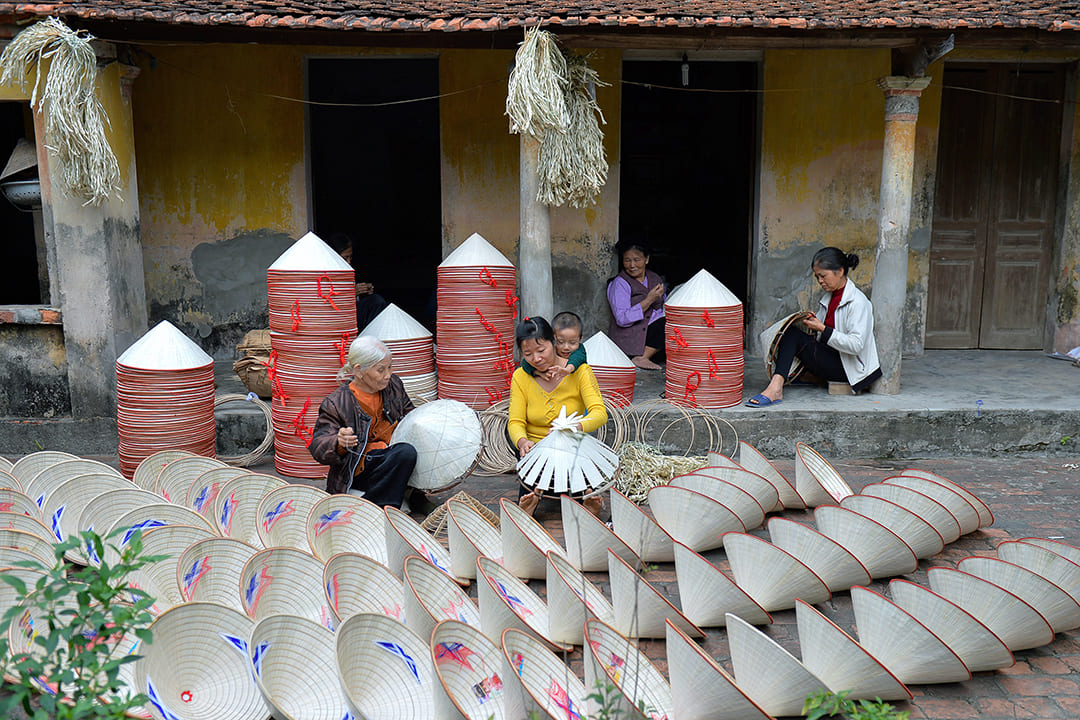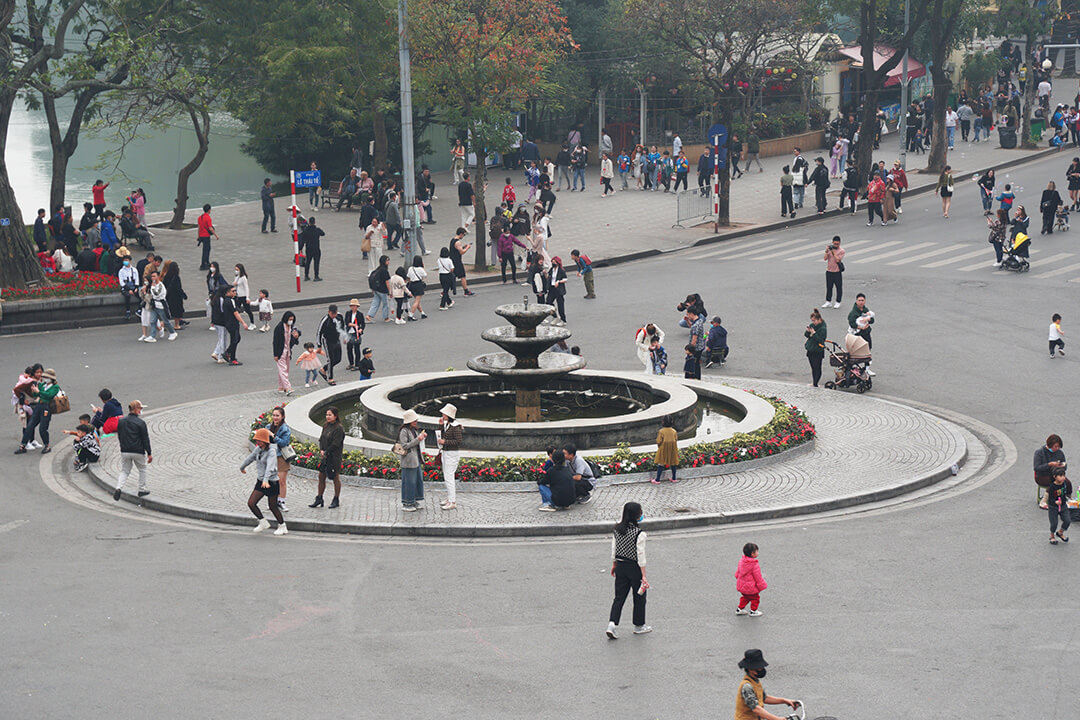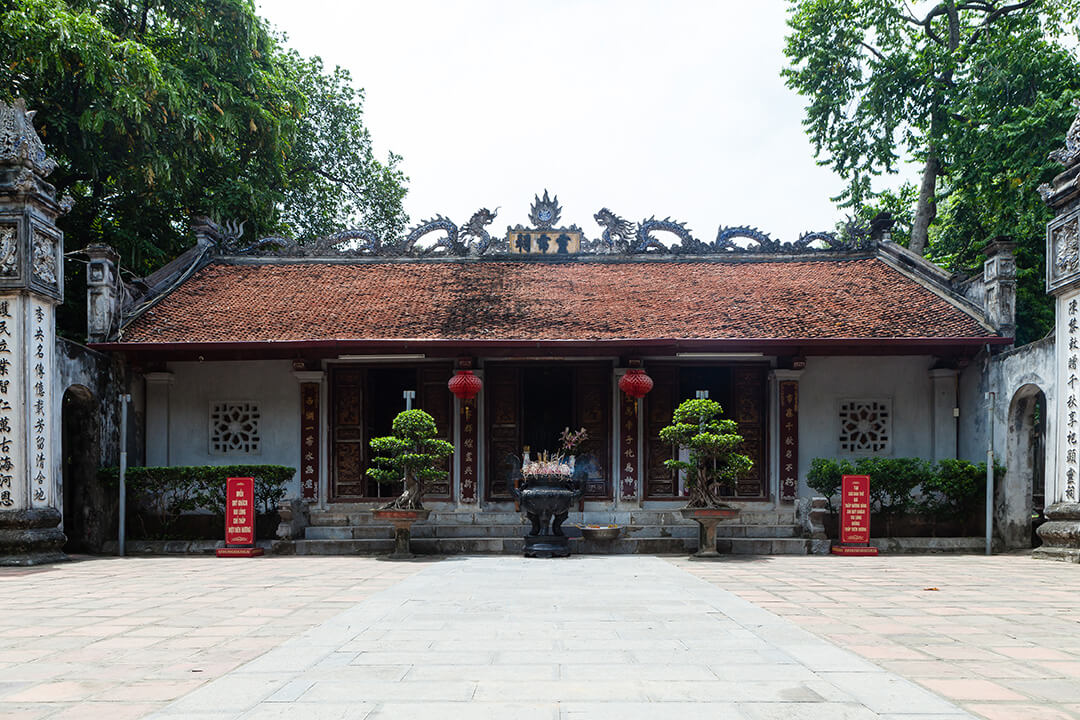Oct - 06 - 2025
Among the famous churches in Hanoi, Cua Bac Church offers a soul-stirring glimpse into a chapter of the capital’s history often overshadowed by its more ancient temples and bustling markets. Nestled peacefully in the heart of Hanoi's political Ba Dinh, this remarkable structure stands as a testament to a unique period of cultural fusion. Unlike any other religious building in the city, its design masterfully blends European Art Deco elegance with traditional Vietnamese architectural motifs. This creates a visual harmony that is both surprising and beautiful. This is a living monument and a tranquil sanctuary. In this complete GTrip guide, we'll walk you through every detail you need for a memorable and respectful visit.
Necessary information about Cua Bac Church in Hanoi
Cua Bac Church is an architectural gem and also an active place of worship in Hanoi. Below is your complete visitor’s guide with essential details to make the most of your visit to this renowned Catholic church in Hanoi.
Where is Cua Bac Church?
Address: No. 56 Phan Dinh Phung Street, Ba Dinh Ward (formerly Ba Dinh District), Hanoi
Cua Bac Church boasts an enviable location on what many consider to be Hanoi’s most beautiful and romantic boulevard: Phan Dinh Phung Street. Lined with a majestic canopy of ancient dracontomelon trees, the street provides a serene and picturesque approach to the church. Its position within the Ba Dinh Ward, the political and administrative heart of Vietnam, places it just a short and pleasant walk from other major historical sites like the Ho Chi Minh Mausoleum and the Imperial Citadel. This strategic location makes it incredibly easy to integrate into a day of sightseeing, offering a peaceful interlude between visits to the city's grander, more crowded landmarks. The church is a well-known spot, making it simple to find, whether you're on foot or using transport.
How to get there?
Best ways to reach Cua Bac Church:
- On foot: If you're staying in the northern part of the Old Quarter or anywhere in Ba Dinh, a walk to the church is highly recommended. The journey along tree-lined streets offers a wonderful perspective on local life.
- By bus (Public transport): Using public transport in Hanoi is an affordable way to get around. Routes like No. 22A or 50 have stops conveniently located near the church, making it an accessible option for budget-conscious travelers.
- By cyclo: For a truly iconic and leisurely Hanoi experience, hire a cyclo. The slow-paced ride along Phan Dinh Phung Street allows you to fully absorb the surrounding colonial-era architecture and natural beauty.
- By ride-hailing apps (Grab/XanhSM): This is the most convenient and popular method for most visitors. Simply input "Cua Bac Church" or "Nha Tho Cua Bac" into the app for a quick, fixed-price ride by car or motorbike.
- By taxi/private car: Traditional taxis are readily available throughout the city. This option is ideal for families, small groups, or those seeking more comfort, especially during the hot summer months.
Cua Bac Church mass schedule
Attending a service is a profound way to experience the church as it was intended, as a vibrant center of faith and community. The schedule accommodates both early risers and evening worshippers throughout the week. For international visitors and expatriates, the church holds a dedicated English-language mass every Sunday morning, providing a welcoming space for prayer and reflection. Whether you are Catholic or simply a curious traveler, observing a mass offers a beautiful, immersive cultural experience.
- Weekdays: 7:00 PM
- Saturday: 5:30 AM, 7:00 PM
- Sunday: 6:30 AM & 7:00 PM | 8:30 AM (Children’s Mass) | 10:30 AM (English Mass)
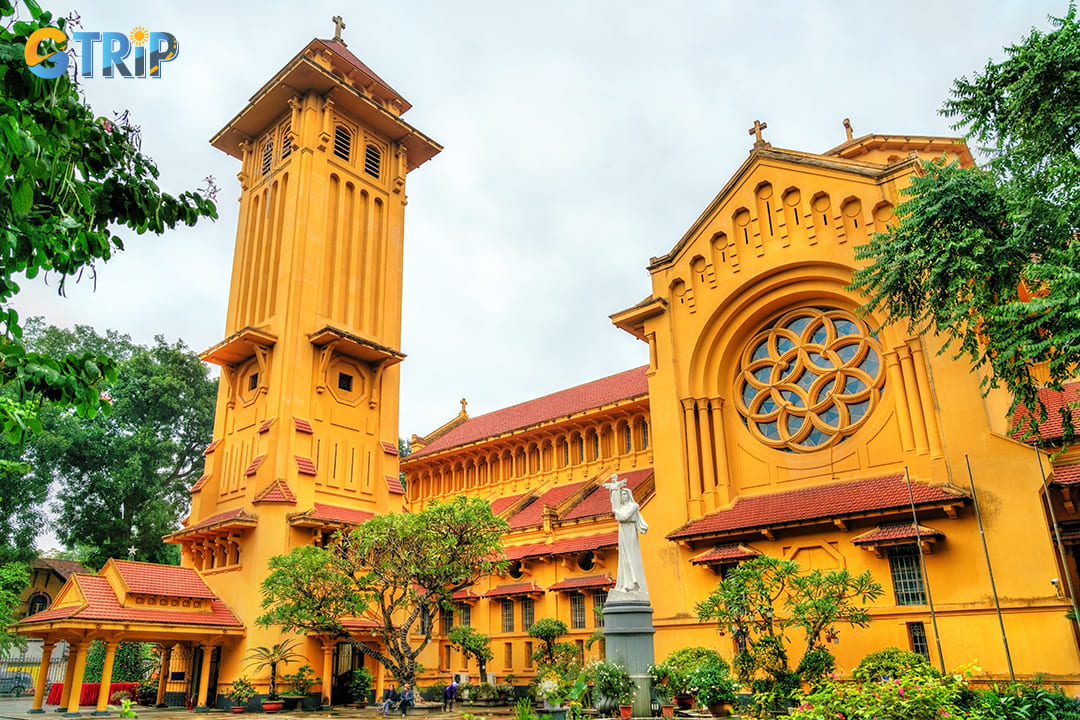
Cua Bac Church in Hanoi sits on scenic Phan Dinh Phung Street, near major landmarks, and is easily reached on foot, by bus, cyclo, or ride-hailing apps
History of Cua Bac Church - A living witness to Hanoi
Constructed between 1927 and 1932 during the height of the French colonial period, Cua Bac Church (officially the Church of Martyrs of Vietnam) is a living monument to Hanoi's complex past. Designed by the visionary French architect Ernest Hebrard, a key figure in the Indochine architectural movement, the church was built to serve the growing Catholic population in the city’s French Quarter.
Its original name was Church of Our Lady of the Martyrs. It has stood silently through the most turbulent decades of Vietnamese history, witnessing the end of French rule, the hardships of the American War, the reunification of the country, and the modern-day resurgence of Hanoi as a global city. This resilience has imbued the church with a profound sense of historical weight, making it more than just a building but a tangible link between Hanoi's colonial past and its dynamic present.
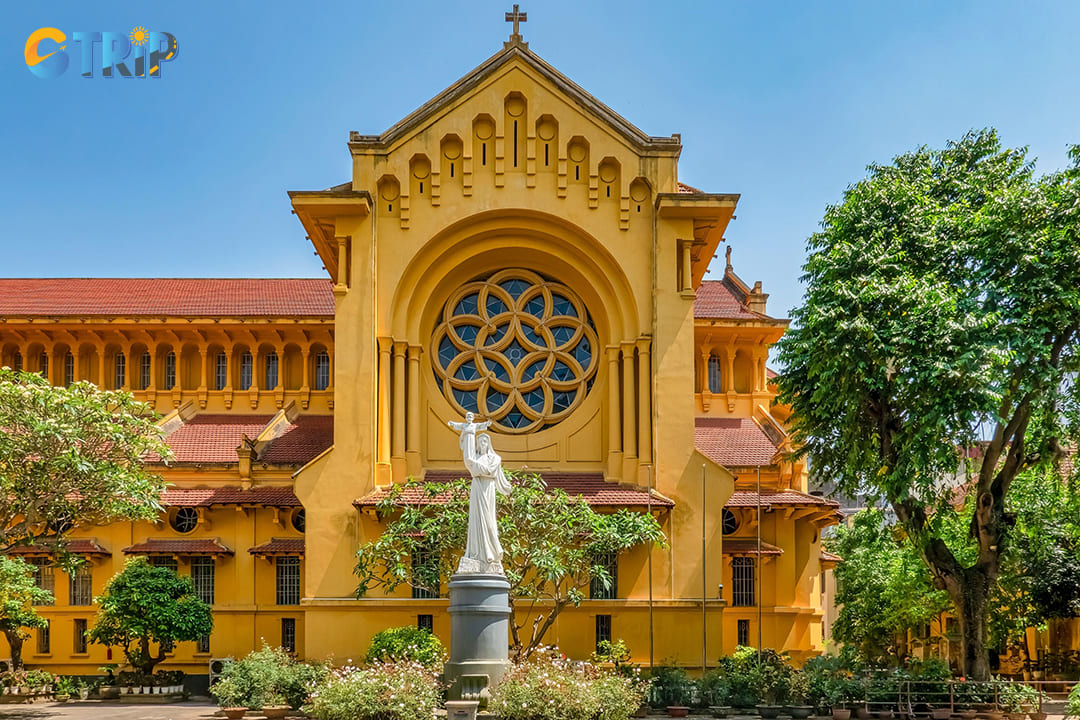
Built from 1927 to 1932 by architect Ernest Hebrard, Cua Bac Church in Hanoi reflects Indochine architecture and stands as a resilient witness to history
Architecture the church - A masterpiece of French-Indochinese style
Cua Bac Church is a celebrated icon of the Indochine architectural style, a movement that sought to adapt European aesthetics to the local climate and culture. Its most distinctive and celebrated feature is its asymmetrical design, a bold departure from the symmetrical, cruciform layout typical of neoclassical European churches. The main structure is a simple, rectangular hall, but it is dramatically offset by a towering, square bell tower on one side, creating a unique and modern silhouette. This deliberate asymmetry gives the building a dynamic, artistic quality.
The genius of the design lies in its harmonious blend of distinct elements. You can clearly see the influence of the Art Deco movement in its clean geometric lines and minimal ornamentation. Yet, these Western forms are seamlessly integrated with traditional Vietnamese features. The most prominent example is the beautiful, curved roof system covered in traditional green-glazed tiles, reminiscent of the roofs found on local pagodas and temples. Furthermore, Hebrard designed Cua Bac Church with large louvred windows and openings that allow ample natural light and air to circulate, a practical and beautiful adaptation to Vietnam's tropical climate.
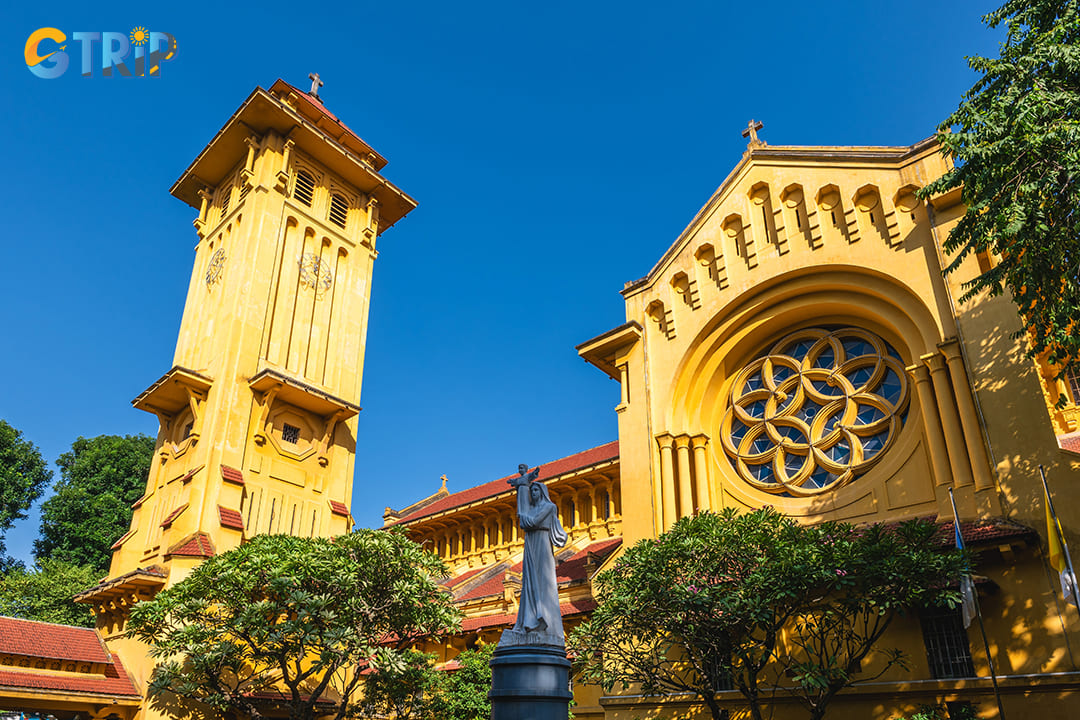
Cua Bac Church in Hanoi showcases Indochine architecture with its bold asymmetrical design, Art Deco lines, and Vietnamese pagoda-inspired roof tiles
Cultural and religious significance
Beyond its architectural and historical merits, Cua Bac Church plays a vital dual role in modern Hanoi. Firstly, it remains an active and important parish for the Catholic community in the Ba Dinh district, serving as a spiritual home where families gather for baptisms, weddings, and weekly mass. It is a place of deep faith and tradition for Hanoians. Secondly, the church has transcended its religious function to become a significant site of cultural and diplomatic importance. Its reputation as a welcoming and historically significant venue was cemented in November 2006. It was when it hosted U.S. President George W. Bush and First Lady Laura Bush for a Sunday service. This event highlighted the church's role as a bridge between faiths and nations, symbolizing a spirit of reconciliation and mutual respect on the world stage.
Things to do at Cua Bac Church in Hanoi
A visit to Cua Bac Church is an invitation to slow down and appreciate the quieter side of Hanoi. While many visitors come for a quick photo, we at GTrip encourage you to linger and immerse yourself in its unique atmosphere. Step inside the gates and the noise of the city's traffic seems to melt away, replaced by a profound sense of tranquility. It’s an opportunity not just to see a historic site, but to experience a moment of peace and reflection. The church offers a rewarding experience that engages all the senses.
- Admire the architecture: Take your time to walk around the exterior and interior. Pay close attention to the unique asymmetrical bell tower and contrast it with the main hall. Look up at the green-tiled roof and notice how it evokes the style of a traditional Vietnamese communal house. Inside, appreciate the airy, light-filled space and the simplicity of its design, which directs all focus towards the altar.
- Attend a mass: For a truly authentic experience, join the local congregation for a service. You don't need to be Catholic to appreciate the solemnity, the beautiful hymns, and the strong sense of community. The Sunday morning English mass is particularly accessible for international visitors.
- Find a moment of peace: The church's main hall is a sanctuary from the city's relentless energy. Find a quiet pew, close your eyes, and take a few deep breaths. The grounds also have benches and shaded areas that are perfect for quiet contemplation or simply resting your feet after a long day of exploring.
- Take beautiful photos: Cua Bac Church is incredibly photogenic. Frame the iconic cream-colored facade against the lush green trees of Phan Dinh Phung Street. Capture the intricate details of the roof tiles or the patterns of light streaming through the louvred windows. Remember to be respectful at all times; turn off your flash and avoid taking photos of people praying without their permission.
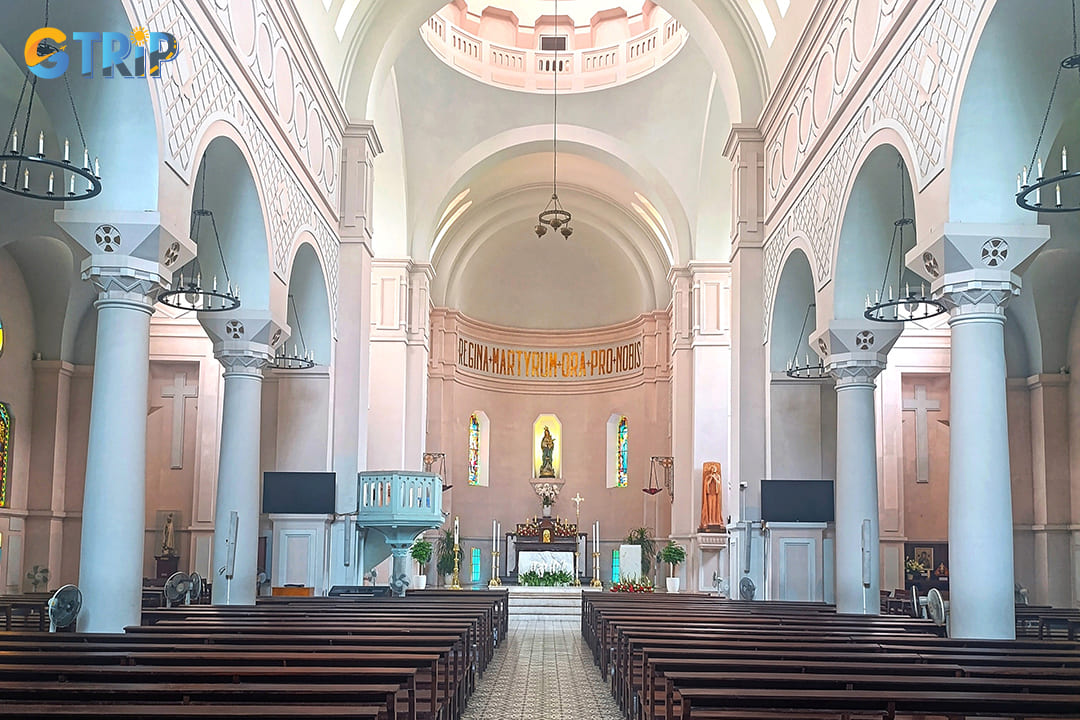
You can find the peaceful moment inside the Cua Bac Church
Essential tips for a respectful visit
It is crucial to remember that Cua Bac Church is, first and foremost, an active house of prayer and a sacred space for the local community. It is not simply a tourist attraction. Approaching your visit with a mindset of respect and reverence will ensure you don't cause disruption and enrich your own experience. This allows you to connect more deeply with the spirit of the place. Adhering to the dress code and basic etiquette is a non-negotiable part of visiting any religious site in Vietnam, and Cua Bac Church is no exception. By being a mindful traveler, you show your respect for the local culture and its traditions.
- Dress code: What to wear? Shoulders and knees must be covered. This is the most important rule. Modest attire is required to enter the church. Avoid wearing shorts, miniskirts, sleeveless tops, tank tops, or any revealing clothing. If you are out exploring in summer clothes, it's a great idea to carry a scarf or sarong that you can easily use to cover up before entering.
- Visitor etiquette & behavior:
- Keep silent and switch your phone to silent mode. The church is a place of prayer and quiet reflection. All conversations should be taken outside. Even whispering can be disruptive.
- No eating, drinking, or smoking is allowed inside the church or on its immediate grounds. Please finish your coffee or snack before you enter the gates.
- Photography is permitted without flash, but be discreet. Be mindful of your surroundings, especially if a mass is in session or people are praying. Do not use a tripod, and try to capture your photos quickly and quietly.
- Show respect to those who are praying. Never walk in front of someone who is praying, and do not treat them as photographic subjects. Give them space and privacy.
- Cultural sensitivity: Understand that you are a guest in a sacred space. Walk slowly, act with decorum, and be conscious of a different cultural and religious context. A simple smile and a quiet demeanor go a long way.
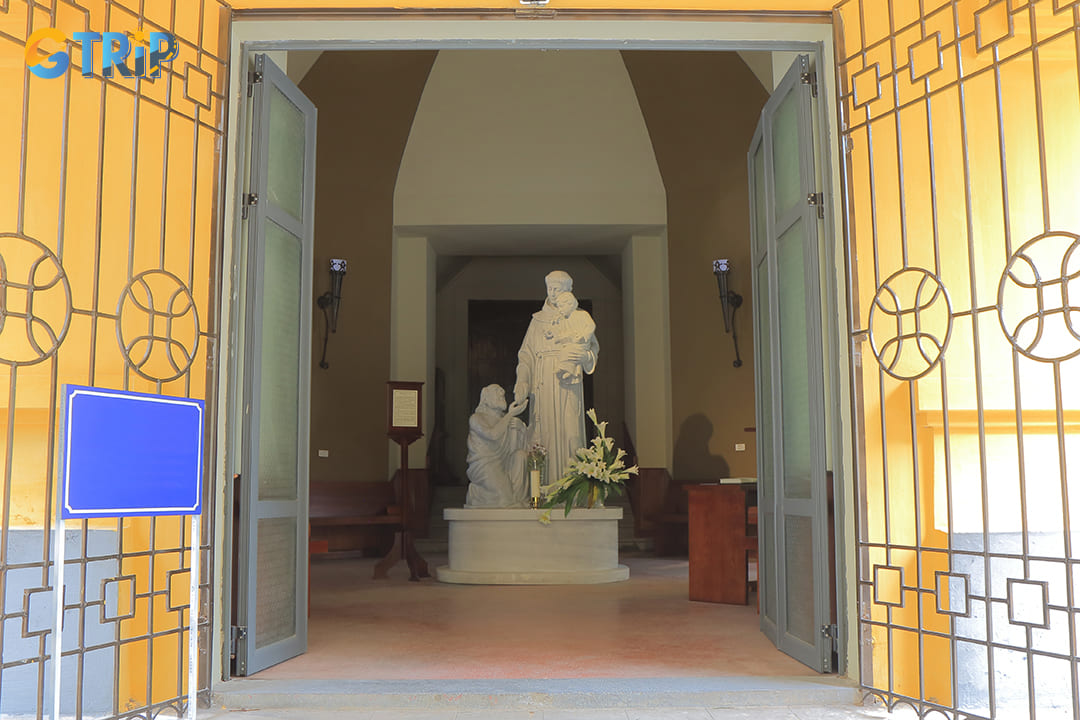
Remember essential tips for a respectful and joyful visit to Cua Bac Church
Attractions near Cua Bac Church in Hanoi
One of the best things about visiting Cua Bac Church is its proximity to some of Hanoi’s most famous landmarks. You can easily combine your visit into a fantastic half-day or full-day itinerary exploring the historic Ba Dinh district.
- Ho Chi Minh Mausoleum Complex (Approx. 1 km, 15-min walk): This monumental complex is the final resting place of Vietnam's revolutionary leader. It includes the imposing mausoleum, Ho Chi Minh's simple Stilt House, the Presidential Palace, and the Ho Chi Minh Museum.
- Quan Thanh Temple: A stunning Taoist temple dedicated to Tran Vu, the God of the North. As one of the Four Sacred Temples of ancient Thang Long (the former name of Hanoi), it holds deep cultural significance and houses a magnificent, giant black bronze statue.
- The Imperial Citadel of Thang Long: A UNESCO World Heritage Site, this was the political center of the country for 13 consecutive centuries. Explore ancient foundations, unearthed artifacts, and walk through the grounds where Vietnamese dynasties once ruled.
- Phan Dinh Phung Street: You don't have to go anywhere to see this attraction. Take a stroll down Hanoi’s "most romantic boulevard" and admire the grand colonial villas and the shade provided by the interlocking branches of ancient trees. It's a destination in its own right.
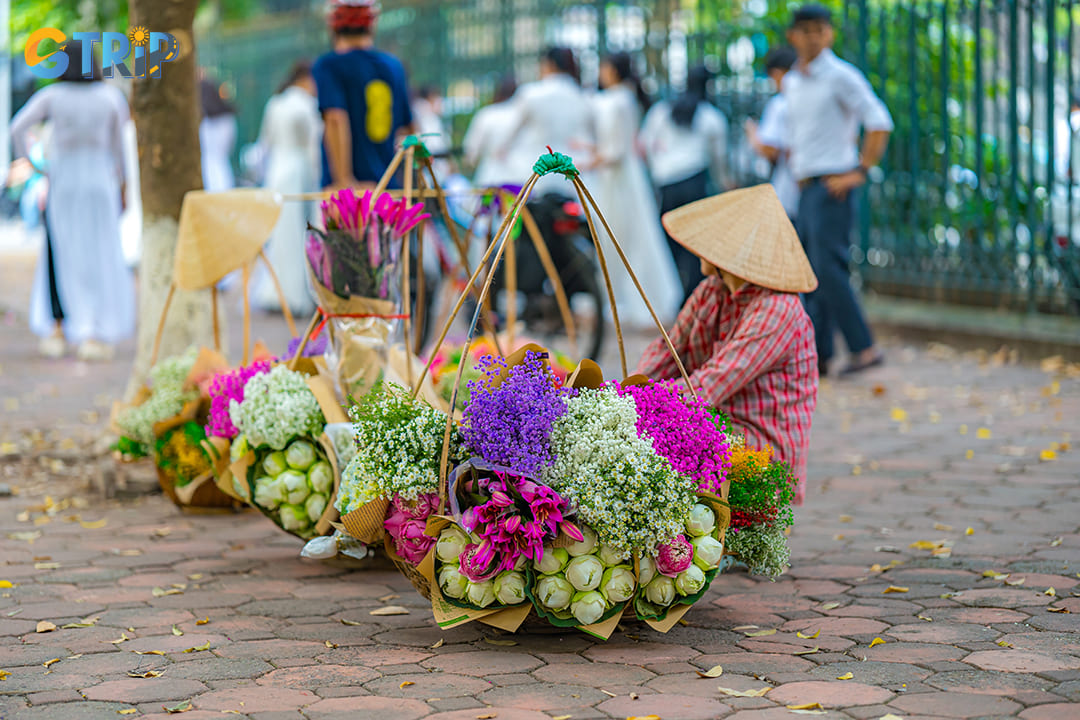
Phan Dinh Phung Street is a romantic street full of flowers
Frequently asked questions (FAQs)
We’ve gathered the most common ones to help you plan with confidence.
1. Is there an entrance fee for Cua Bac Church?
No, visiting Cua Bac Church is completely free. Donations are greatly welcomed to help with the church's maintenance and community services, but they are not mandatory. You may see a donation box near the entrance.
2. What is the best time of day to visit Cua Bac Church?
For photography, the golden hours of the early morning or late afternoon are perfect. The soft, warm light illuminates the cream-colored facade beautifully. If you wish to experience the solemn atmosphere and local culture, visiting during a mass is ideal, but be sure to arrive early and be respectful. The church grounds are generally open from morning until evening.
3. Can tourists attend the mass?
Absolutely. Tourists and visitors of all faiths are welcome to attend any mass. The 10:30 AM service on Sunday is held in English and is particularly suitable for international visitors. If you attend, please choose a seat towards the back of the church and observe quietly and respectfully.
4. How much time should I spend at Cua Bac Church?
A typical visit for sightseeing, appreciating the architecture, and taking photos will take about 30-45 minutes. If you plan to attend a full mass, you should budget for at least an hour to an hour and a half for a more immersive and unhurried experience.
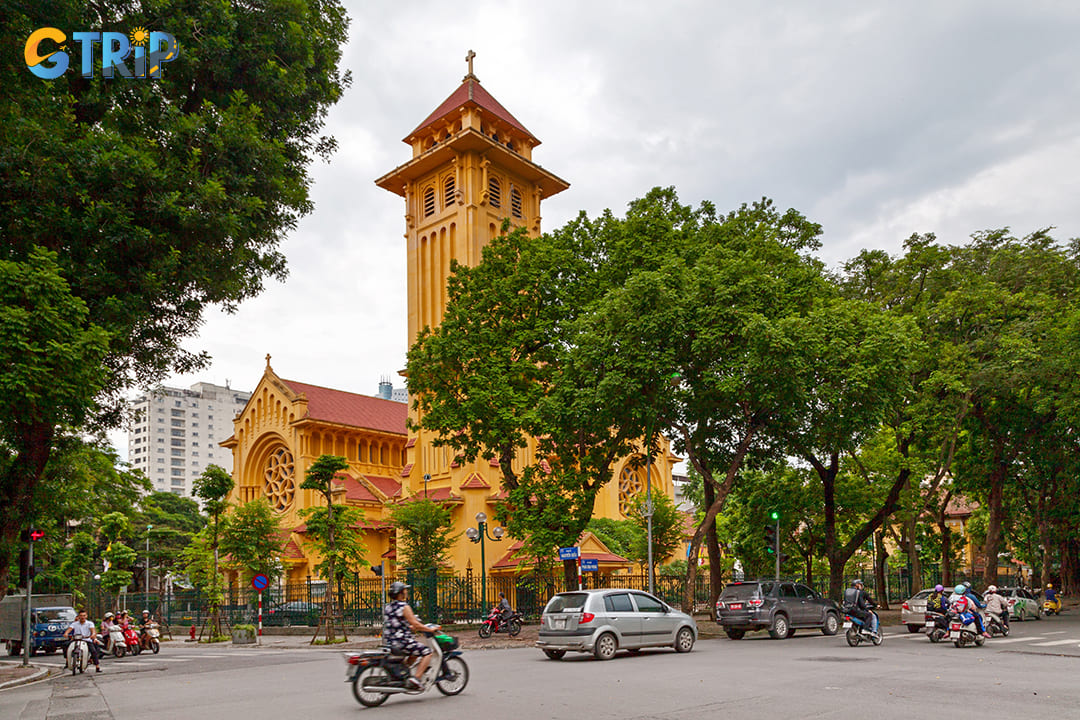
You can plan to visit Cua Bac Church with confidence after reading the FAQs
Read more:
Cua Bac Church in Hanoi is far more than just another stop on a Hanoi city tour. It's a destination that tells a powerful story of faith, history, and cultural synthesis. It’s a place where you can escape the city's frantic pace, find a moment of peace, and connect with a different side of Hanoi's captivating identity. It stands as a powerful reminder that even in a city of ancient temples and pagodas, a colonial-era church can hold just as much soul and history. We hope this GTrip guide helps you discover the quiet charm of Cua Bac Church. For more insider tips on exploring Vietnam's capital, check out our other Hanoi travel guides.

